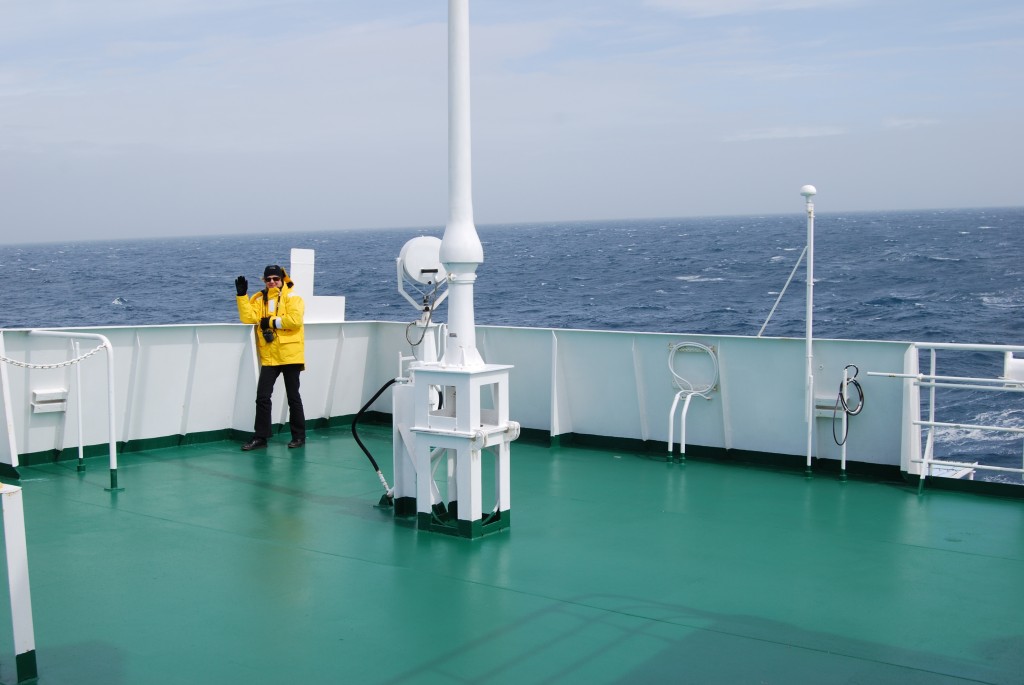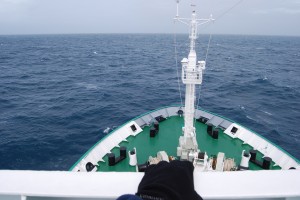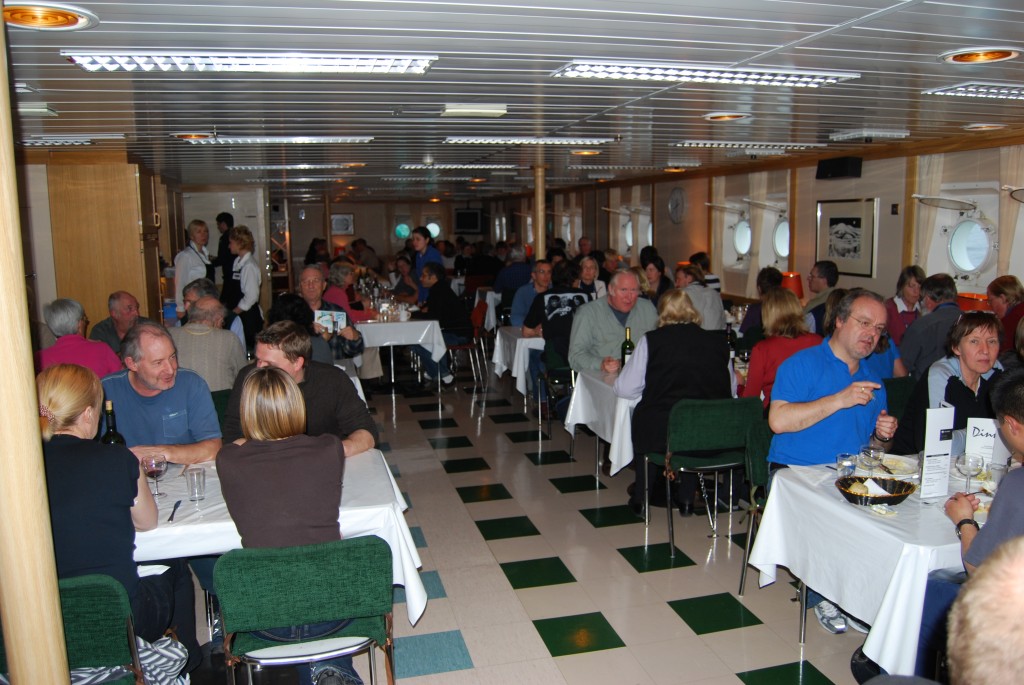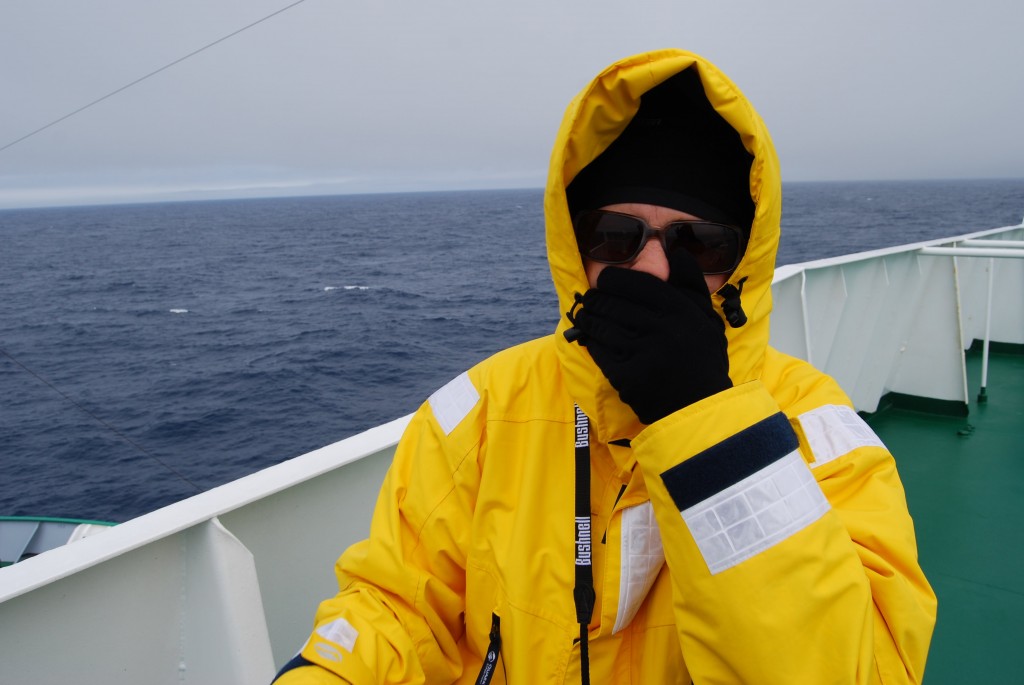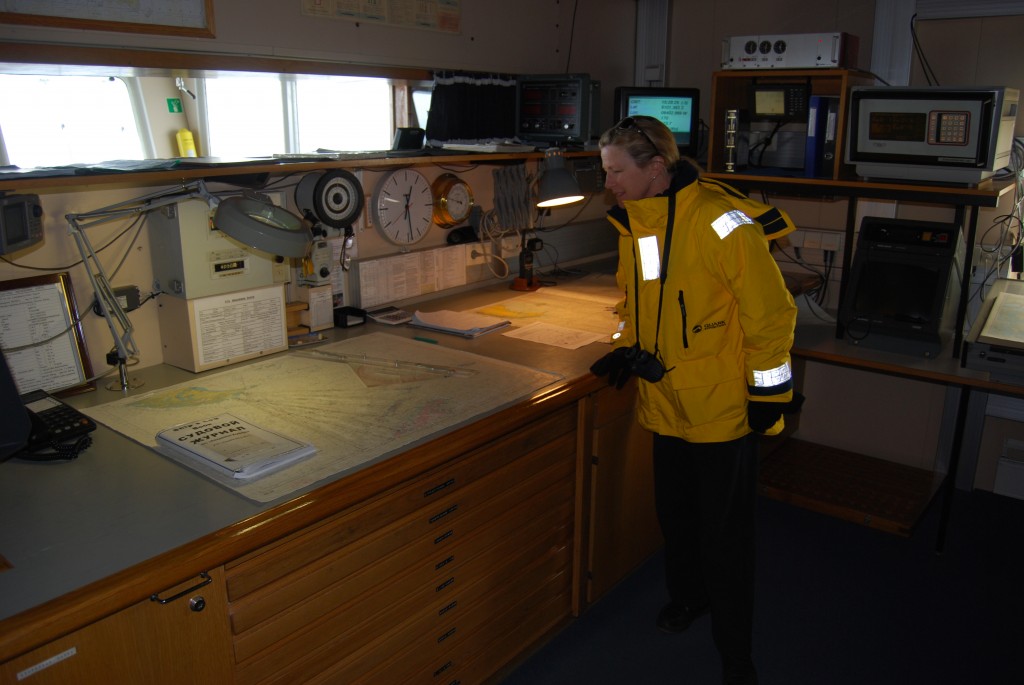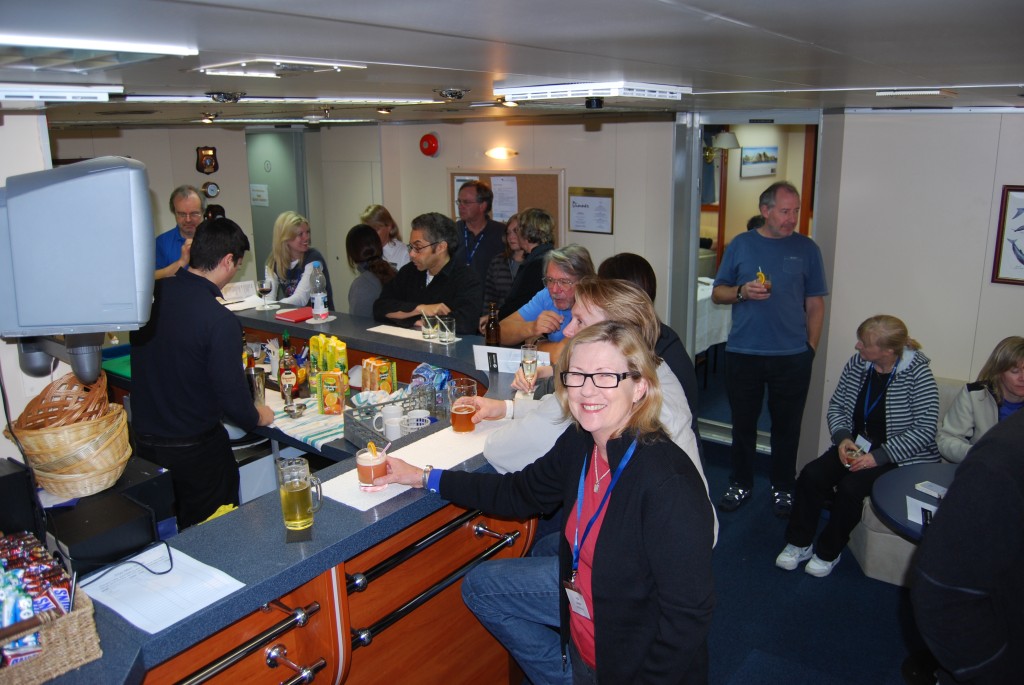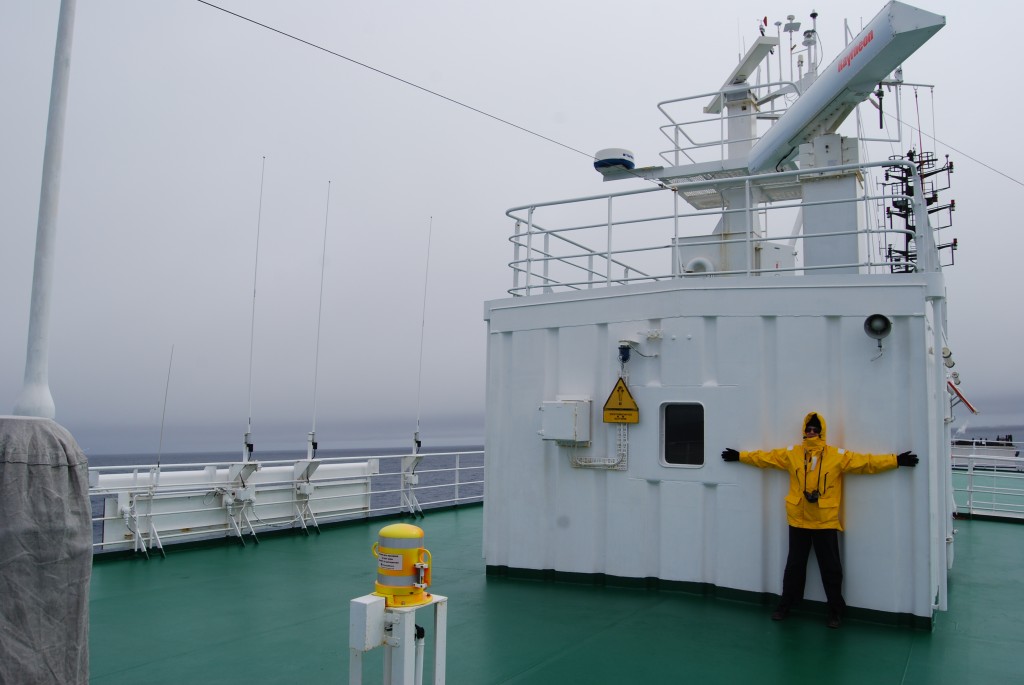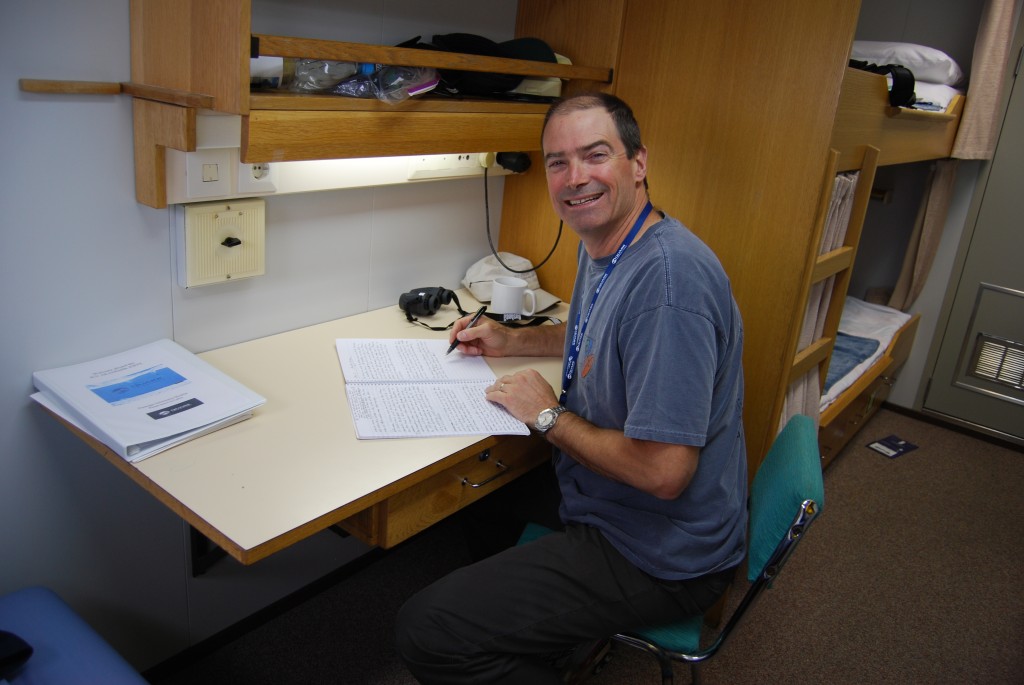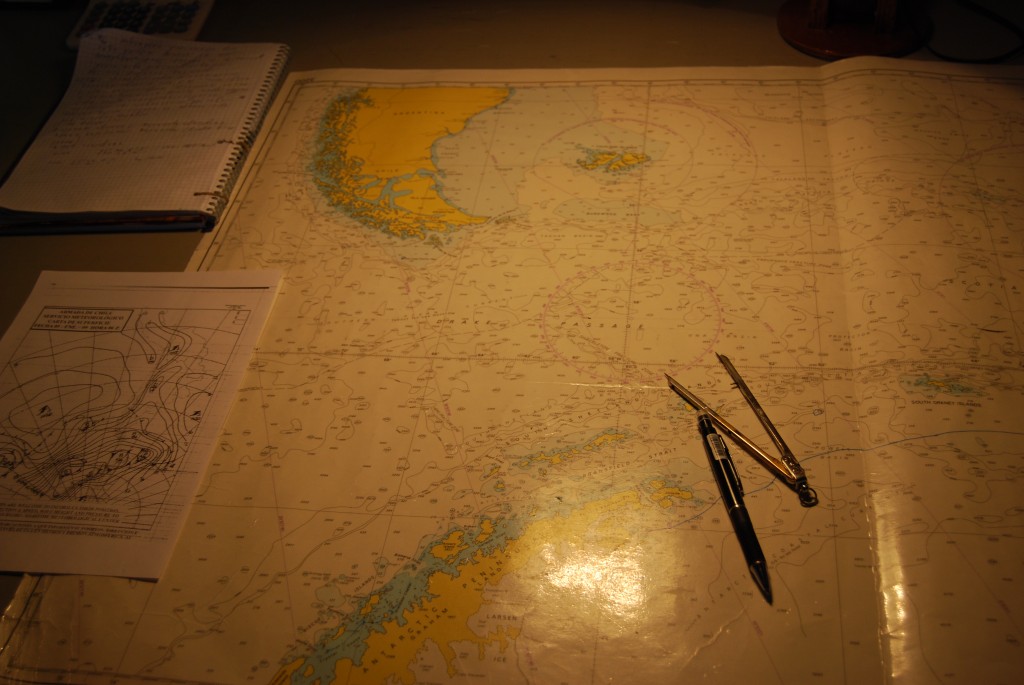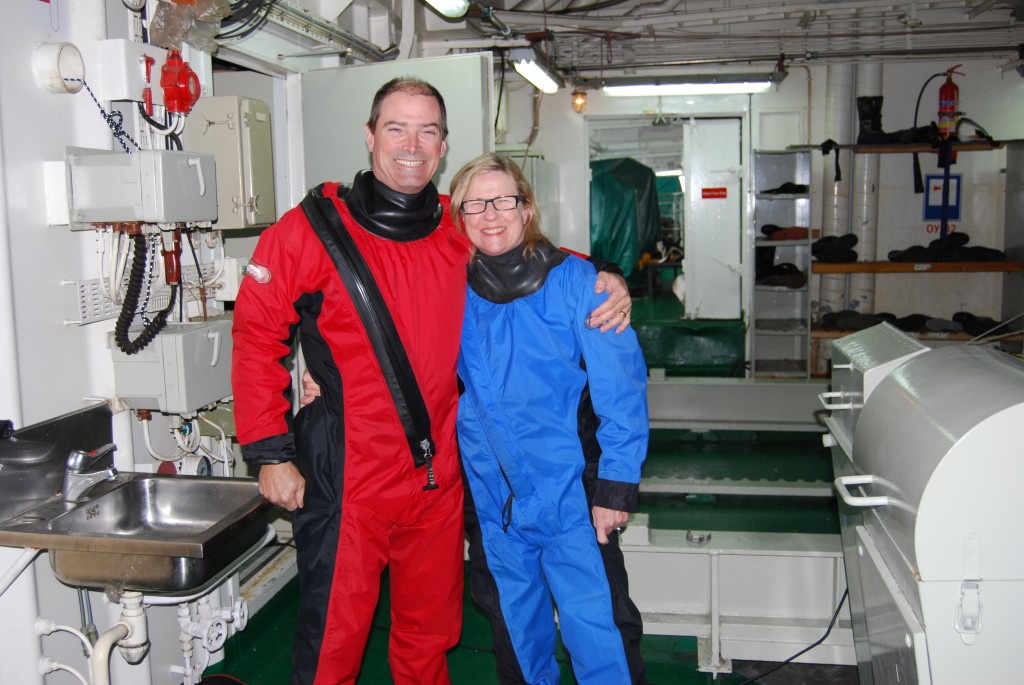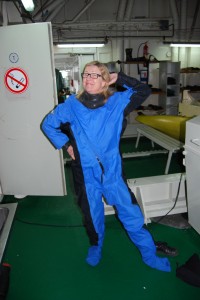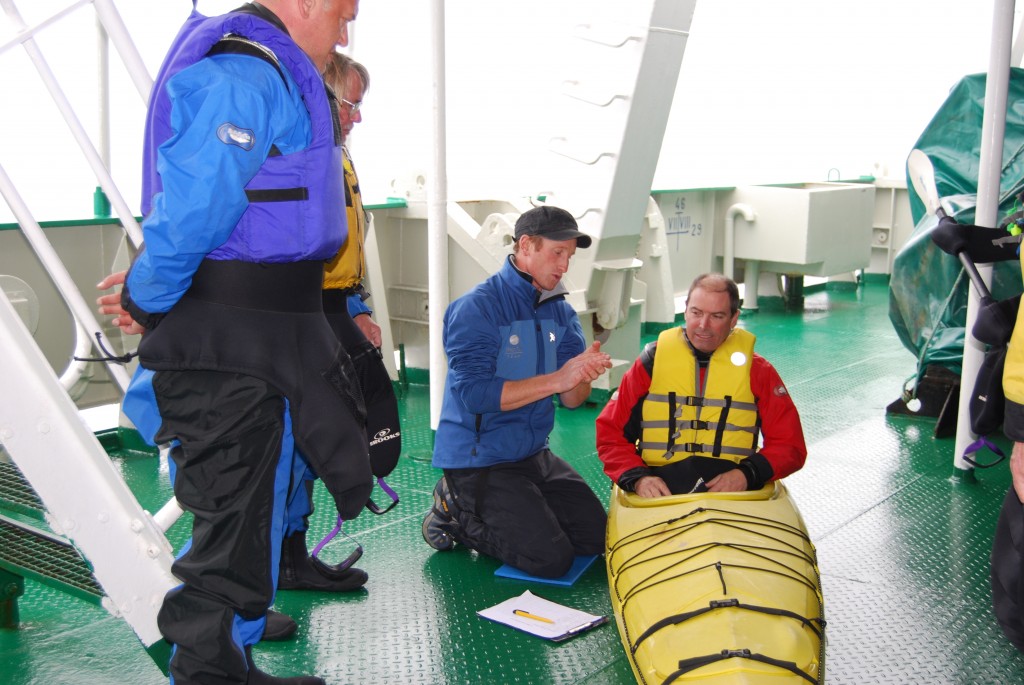They say in the guide books that the amazing experience of Antarctica has to be earned first by enduring three days of rough open ocean while crossing the Drake Passage. We now know what that means.
After the first night onboard our new home the universal wake up call came at 0730, heralding the start of what might be called an up and down day. During the group breakfast we met more of our 100 fellow travellers, most of them interesting to talk to and very well travelled as we expected. We were about at the average age, although there are a few people in their 70’s and even a few in their 30’s, and there were also three kids. There was a wide range of nationalities but probably Americans made up the largest group, but the Brits, New Zealanders, Canadians, Danish and Israelis were all represented plus two Hong Kong couples, a Lithuanian, Belgian, Portuguese and who knows what else. A floating United Nations! Interestingly, Julie seems to be the only true-blue Aussie.
The days crossing the Drake Passage were filled with onboard activities to help pass the time, educate us on the ways of Antarctica and prepare us for what we would be doing over the next two weeks. Morning and afternoon sessions were generally filled up by lectures from ship staff on subjects such as Antarctic geology, marine life, great exploration adventures and photography. One of the crew who gave us a presentation on seabirds was a Kiwi named Tony Crocker. Amazingly, Tony and I used to work for the same travel company in Sydney many years ago and he recognised my name on the manifest. We had a catch-up and a good laugh, talking about mutual friends, lost time and his new life at sea. Small world.
The Drake Passage is said to be some of the roughest water in the world and its deep bottom is scattered with ships from the past who couldn’t complete their passage around Cape Horn. The second afternoon we had our first sample of how small the ocean can make you feel, even on a ship specially built to cope with these conditions. As we were taught on the first day, when walking around you must always have ‘one hand for the ship’, which basically means holding a railing or in some way steadying yourself no matter what you are doing.
For Happy Hour we visited the bar, as you do. In the rough seas two funny things occur in the bar. Sitting on the bar stool, even for the first beer, is hard when dealing with the sway of the ship – one hand on the rail and one on the beer. Drinkers have different techniques in this important area – some used their free hand to wrap around the far end of the bar table, I used the rail under the ledge, others just stood up with their feet wide apart (bad strategy late at night). Also, you have to get the timing of pouring beer into your mouth. If you get it wrong and the boat sways at the wrong time you either get beer all down your shirt or it sways out of your mouth before you catch it going back into the glass. Tough times, I can tell you.
Having fortified ourselves, Julie and I rugged up and went up on the top deck for a wild view of the ocean. By this stage the seas had huge six metre swells and the ship was pitching heavily. The ship would go down the back of a wave, smash into the next huge crest, water spray wildly up to Level 6 where we were standing and then start all over again. It was at these times we adopted a new rule – ‘two hands for the ship’.
Dinner that night was a wild affair. First of all, three big meals a day without exercise made us feel bloated and lethargic. But the seas were huge, the portholes in the dining room were filling with swirling waves like the window of a washing machine. Luckily all the chairs and tables were bolted down but it was a challenge to walk back to your table with food on a plate – even if you were in control someone else could careen into you. Most people’s stomachs suffered a least a little due to the continuous pitch of the ship so the group was not in a big eating mood.
Julie took her queasy stomach to bed early so I went up to the Bridge to watch some monster waves splash the pilot’s windscreen and see our course veer into the Pacific. The Captain had a policy of an open Bridge which means the passengers could stand and watch, even mingle with the Russian crew (some of whom spoke a bit of English) unless there was an emergency. The bridge was on Deck 5 so when the ship hit a big swell and the waves crashed against the huge windscreen in front of us you knew it was rockin’. The ship rose and fell and pitched side to side at the ocean’s ultimate discretion, we just had to hang on for the ride.
The next morning we woke to calmer seas and a stark lesson in expedition travel. At breakfast we were told one of the elderly passengers had hurt herself on the ship (she had fallen in her cabin after not having one hand for the ship and had broken her hip) and they had seriously considered taking her back to Ushuaia. Because of the rough seas (thank goodness for the rough seas!) they discounted that and instead we tacked toward the South Shetland Islands to drop her off on another ship that is heading back to Ushuaia.
The seas were a bit calmer for most of the day, although it got foggy as we approached land. The afternoon included two more lectures – both mandatory sessions covering Antarctic treaties, preserving the environment and Zodiac safety. One of the key reasons we chose this particular cruise was that it had a couple of additional features we wanted – kayaking and camping in the snow. The kayaking group was quite small, only about 12, due to the limited number of kayaks, and we had to sign up months in advance to secure our spot. This afternoon we all got fitted for the dry suits, special gear and preliminary instruction. Very cool and exciting stuff.
Another well deserved Happy Hour, this time with less need for hanging on to our bar stool for dear life, followed by dinner. Each evening a popular movie was shown but they were played in the dungeon-like bottom level, well below sea level and notoriously stuffy, claustrophobic and rocky. We didn’t want to spend any more time down there than absolutely necessary. Instead we went to the bar where Julie was feeling good enough to have a couple of well deserved drinks.
And all this while the mighty Akademik Ioffe steams closer and closer to Antarctica…

